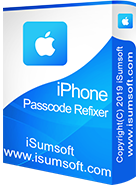Device supervision on iPhones and iPads can provide valuable control over device management and security for organizations and institutions. However, there are instances when individuals may want to remove device supervision from iPhone or iPad for personal or specific reasons. Whether you've purchased a second-hand device with existing supervision, or you no longer need the restrictions imposed by an MDM profile, this article will walk you through to solve this issue.

"Supervision generally denotes that the device is owned by the organization, which provides additional control over its configuration and restrictions", according to the explanation provided on Apple's official website. In a supervised device, the Mobile Device Management (MDM) profile is installed with certain restrictions and configurations that cannot be easily removed by the device user.
If your device is under supervision, a prominent message "This iPhone (or iPad) is supervised and managed by XXX. Learn more about device supervision…" will be displayed at the top of the Settings page, informing you about the current state of supervision and serving as a visual indicator to let you know that the device's activities and settings are being monitored and controlled by a designed business or organization.
Removing the MDM profile from Settings is the general method to get rid of device supervision. However, it is noted that the visibility of the MDM profile can be configured as both visible and invisible by the supervisor. Administrators can choose to make the profile visible to users, allowing them to see and access it within the device's Settings. Here is how to remove device supervision from Settings:
Step 1: From Settings, tap General > Device Management (or VPN & Device Management) > the listed MDM profile.
Step 2: On the profile details page, tap Remove Management. A confirmation prompt will appear. Review the information provided and confirm your decision to remove the profile. Learn no option to remove MDM profile.
Step 3: If prompted, enter your device passcode or provide any additional authentication required to complete the removal process.

In certain scenarios, administrators may opt to hide the MDM profile from the device's Settings. However, if you need to remove the MDM profile, there are third-party tools available, such as iSumsoft iPhone Passcode Refixer, that can assist you in removing device supervision from iPhone/iPad quickly and easily, without any risk of data loss.

iSumsoft iPhone Passcode Refixer
Step 1: After installing iSumsoft iPhone Passcode Refixer on your computer, launch it and connect your device to the PC.
Step 2: From the software interface, choose Remove or Bypass MDM.

Step 3: Click on Start to begin removing device supervision. Please note that you must first go to Settings > Apple ID profile > Find My to disable Find My Device.

Step 4: MDM removal is in progress and may take several minutes to complete.

Step 5: When the "Removed Mobile Device Management Successfully" prompt appears, your device will restart automatically and the device supervision will be successfully removed.

There are certain restrictions and considerations when using Apple Configurator 2 to remove MDM:
1: Apple Configurator 2 can only remove MDM profiles from devices that you have ownership or administrative permission over.
2: Apple Configurator 2 is a macOS application, which is available exclusively for macOS and cannot be installed on other operating systems such as Windows or Linux.
3: Removing an MDM profile using Apple Configurator 2 typically involves a full device restore, which erases all data and settings on the device.
Therefore, it is crucial to back up any important data before proceeding with the removal process and supervised device backups are handled in two different ways:
Follow these steps to remove MDM from your device:
Step 1: Download and install Apple Configurator 2 on your Mac from Mac app store. Then Launch the software and connect your device to the computer.
Step 2: On the interface, Click Actions > Advanced > Erase All content and Settings, which you can remove device supervision from iPhone or iPad successfully.
